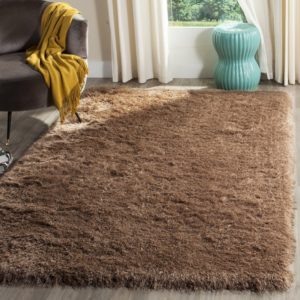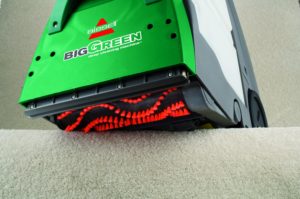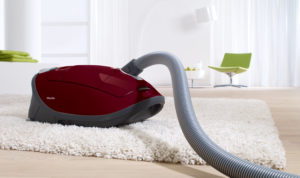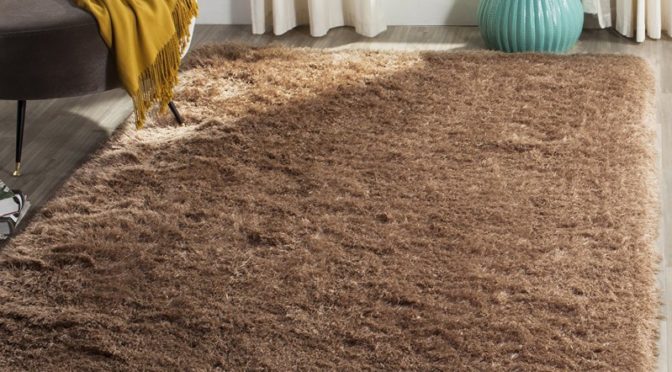
While nylon is without a doubt the most popular choice for a carpet fiber today, polyester is still one of the most sought-after options on the market. Why? It repels stains, it looks good, it’s ecologically friendly, and perhaps most importantly, it’s cheap. You’ll notice we didn’t mention durability–we’ll get to that later. Today we’re going to look at the pros and cons of polyester as a carpet fiber and provide tips for maintaining carpets and rugs made from one of the oldest synthetic fibers: polyester.
What’s the history of polyester and when was it invented?
Polyester, like nylon, was invented through the work of many chemists working collaboratively, although unlike nylon, its invention is credited to more than one person. At DuPont, Wallace Hume Carothers researched a polymer in the 1930s that would eventually come to be known as polyester, but he left the material so he could focus on a different, though closely related synthetic: nylon.
A decade later, a pair of chemists in Britain, James Tennant Dickson and John Rex Whinfield, furthered research into creating fibers from alcohols and carboxyl acids and patented PET in 1941, whose full name was polyethylene terephthalate. PET is the polymer that underpins a range of synthetic fibers, including polyester, Dacron, and Terylene.
What are the pros of polyester when used in carpeting?
The single biggest advantage of polyester in carpeting environments is the fact that it is inherently stain resistant. Polyester is a fiber with closed cells; at a microscopic level, stains can’t adhere to any unfilled dye sites. Of course, that doesn’t make polyester impervious to discoloration. What most people misidentify as staining in polyester carpets, however, are typically incidences of soiling.
We write extensively about staining vs soiling here, but the key points to note are that staining refers to an attachment of a substance into available dye sites in a carpet fiber. In plain English, this means that when you spill wine, coffee, or orange juice onto a carpet with low stain resistance, the liquid touches the fiber and says “hi! Let’s be friends!” to parts of the carpet fiber that haven’t been dyed with the color of the fiber. The fewer dye sites available, the less staining occurs.
Soiling, in contrast, comes from residues left on carpet fibers from oils in our skin or from traces of cleaning products in the fibers. The residue attracts dirt and resembles a stain. To reduce it, you can use socks and slippers whenever you’re on a carpet (and never lie down on it), or you can clean the fibers properly with a good carpet cleaner and vacuum (a more realistic plan for most of us). We’ll share our recommended cleaners below.
What are other reasons to choose polyester carpets and rugs?
While stain resistance is perhaps the primary reason homeowners choose polyester for synthetic fiber carpets, there are additional pros to using polyester, including the cost of purchase, visual appeal, and ecological friendliness. Because polyester costs far less to make than nylon, it costs less to buy. And because of how flexible polyester is as a fiber, you can find carpets in a range of price points, styles, and levels of quality.
Polyester is also a highly reflective fiber due to the alignment of its chemical bonds, which means that if you look at a polyester carpet vs a nylon carpet in the same color, the polyester carpet will look far more attractive to the eye.
Finally, while polyester, being a synthetic fiber, won’t be nearly as friendly to the environment as natural carpet fibers like wool, if you’re going to use a synthetic fiber for sustainability reasons, polyester is one of your best bets (and is far better than nylon). Estimates of carbon footprints to produce carpets suggest twice as much energy is used producing nylon fibers as that necessary for the equivalent amount of polyester. Beyond this, it’s also far easier to recycle polyester than most other synthetic fibers. You might be surprised to learn that a large percentage of polyester used to make carpets today comes from recycled polymers made in plastic soda, pop, and water bottles. Recycling keeps our landfills a little less full and reduces the resources we consume on our finite planet.
What are the cons of using polyester for carpeting?
However, while there are undoubtedly many reasons to choose polyester, it’s essential to note that it does have a few disadvantages–perhaps the most significant being its historic lack of durability. In the past, nylon was considered a far stronger fiber, and polyester was relegated to low-traffic parts of homes like bedrooms and basements instead of high-traffic areas like stairs and family rooms. That said, today, polyester has come a long way, and while still not as strong as nylon, the gap is much narrower, and the ever-longer carpet warranties privy to polyester carpets are proof of increased confidence in their longevity.
Which carpet cleaners and vacuums help maintain polyester rugs and carpets?

If anyone tells you that you need a particular carpet cleaner or vacuum to maintain a polyester rug or carpet, run the other way, because you’re going to want to avoid the flames from a nearby pair of pants on fire. Polyester doesn’t need special machines for its upkeep; a $200 carpet cleaner and vacuum will do in a pinch. That said, if you don’t want to replace that cheap carpet cleaner and vacuum every year or two due to inevitable breakdowns, we’d recommend investing in a couple of quality alternatives.

For carpet cleaners, we like the Bissell 86T3 Big Green. We’ve reviewed it regularly (e.g., here and here) and continue to be impressed by how favorably it compares against any carpet cleaner below $1,000. For vacuums, we recommend either the Miele Complete C3 Soft Carpet or the Miele Compact C2 Electro+. Both are buy-it-for life canisters capable of tackling any style of carpet in any pile (including high-pile carpeting). The Soft Carpet in particular will clean any carpet on the market, while the Electro+ offers a great value for families with slightly smaller budgets.
![]() You can buy the Bissell 85T3 Big Green carpet cleaner here on Amazon. You can buy the Miele Complete C3 Soft Carpet here or buy the Miele Compact C2 Electro+ here.
You can buy the Bissell 85T3 Big Green carpet cleaner here on Amazon. You can buy the Miele Complete C3 Soft Carpet here or buy the Miele Compact C2 Electro+ here.
![]() Canadians can buy the Miele Soft Carpet here, the Compact Electro+ here, and the Bissell Big Green here.
Canadians can buy the Miele Soft Carpet here, the Compact Electro+ here, and the Bissell Big Green here.
 If you find our research on PMC helpful, you can follow our efforts to keep maniacally reviewing home cleaning tools by shopping through our links above. We promise to keep fighting the good fight against every horror children, animals, and grown, yet messy humans can inflict upon a clean home.
If you find our research on PMC helpful, you can follow our efforts to keep maniacally reviewing home cleaning tools by shopping through our links above. We promise to keep fighting the good fight against every horror children, animals, and grown, yet messy humans can inflict upon a clean home.

